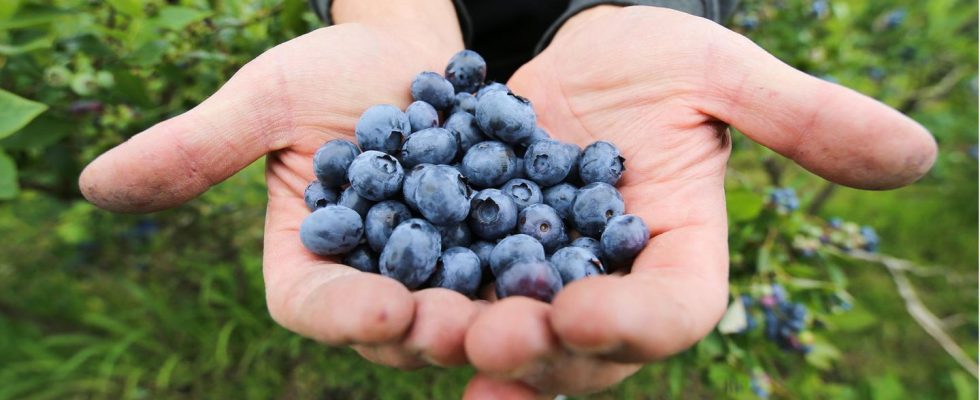superfood
Vitamin bomb blueberries: berries are the energy boosters in summer
The blueberry harvest has begun: the berries are in season from June to September.
© Mohssen Assanimoghaddam/ / Picture Alliance / dpa
Packed with healthy nutrients, blueberries not only provide energy, but also help to maintain a youthful appearance. It is not without reason that they are considered a superfood. Wild berries have it all. These can be collected from June.
Whether açai or goji berries, anyone who has dealt with healthy nutrition in recent years cannot avoid the berries any more than they do chia seeds. The so-called superfood is on everyone’s lips. But there is also a fruit growing in the local forests that has it all: the blueberry.
The forest fruits combine many substances that give the body a big vitamin boost. It is now known that blueberries have an anti-inflammatory effect. The fruits contain antioxidants that support the body in fighting free radicals. There are also plenty of C and E vitamins and tanning and minerals that stimulate digestion. In short: blueberries are not only great helpers for strengthening the immune system, they also play their part in slowing down aging of the skin.
Superfood from the local forest
And the best thing about them: They grow on your own doorstep, so to speak. The first wild berries can be plucked from the bushes from June. It’s worth collecting because they carry far more nutrients than their cultivated relatives.
Wild blueberries are true color bombs. The more healthy substances the berries contain, the bluer the tongue turns when they are eaten. The fruits grow primarily in sparse coniferous forests and on moors. You should definitely keep an eye out at the edge of clearings, because the light conditions for the shrubs are particularly good there.
Fox tapeworm danger in forest fruits?
For fear of the fox tapeworm, which is transmitted via the fox’s droppings, many keep their hands off the forest fruits. But they don’t have to, says Sönke Hofmann, a trained forester and Nabu managing director in Bremen: “There is not a single proven case that someone has been infected via wild fruits.”
If you want to be on the safe side, use the blueberries to make jam. At more than 70 degrees, the fox tapeworm eggs die. The bigger danger: ticks. “It is quite normal for ticks to sit in the blueberries and let the collector wipe them off in passing,” says Hofmann, who recommends tucking your pant legs into socks when collecting them and checking the body later for the bloodsuckers.
Wild or cultivated – in recent years, the forest fruit has blossomed into number two among berries, behind the strawberry. Even if, strictly speaking, it’s a nut. Blueberries are light, aromatic and are wonderful for smoothies, fruity desserts or pastries. So it’s no wonder that more and more of the blue berries are being eaten – in 2019 almost a kilo per capita in Germany. The front runner, strawberry, has three kilos per nose.
Sources:German fruit and vegetables, Nabu


